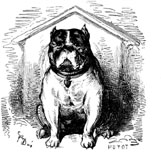
The Man Who Was Ratzinger (Part II)
AD INTRA -- POPE BENEDICT XVI & THE CHURCH
One distinguishing mark of Pope John Paul II’s pontificate was his penchant for issuing ceremonial mea culpas for what he called the “dark pages” of Church history. As of 1998 he had publicly apologized for the Church’s culpability 94 times — to the indigenous peoples in the Dominican Republic in 1984, to Muslims in 1985, to Jews and Africans in 1986, and to the Greek Orthodox in 2001, just to provide a few examples.
Although it is doubtful that Benedict will continue these “grand gestures” of public self-flagellation for the past sins of the Church, that doesn’t mean the new Pope won’t be issuing any apologies. In fact, in the month before he was elected to the See of Peter, the man who was Joseph Ratzinger did just that. In his Good Friday meditations on the Stations of the Cross at the Roman Colosseum, he asked for forgiveness not for the Church’s past faults, but for those of today. Moreover, he asked forgiveness from God, not from the world. In an obvious reference to the abuse scandals that have dominated the Church in recent years, he made this intercession: “Lord, your Church often seems like a boat about to sink, a boat taking in water from every side. In your field we see more weeds than wheat. To see the vesture and visage of your Church so filthy throws us into confusion. Yet it is we ourselves who have soiled them! It is we who betray you time and again, after all our lofty words and grand gestures. Have mercy on your Church.”
Throughout these meditations, Cardinal Ratzinger made several references to a necessary purification of the Church, and it seems safe to say that Pope Benedict XVI sees this “purification” as a central task of his pontificate, one which he believes needs to begin with his priests and bishops. Reflecting on Jesus’ third fall under the weight of the Cross, Ratzinger prayed, “How much filth there is in the Church, even among those who, by virtue of their priesthood, ought to belong entirely to Christ! How much vainglory, how much self-complacency!”
A few days after the white smoke appeared above the Sistine Chapel, the Italian newspaper La Stampa published an article about a document that was making the rounds among the cardinals the week prior to the conclave. Although it was unsigned, Cardinal Ratzinger is believed to have been the author. According to La Stampa, the document detailed a wide array of problems inside the Church. It provided a detailed portrait of the situation of the clergy around the world, and particularly in Europe and North America: “The ‘lack of integrity’ of too many priests is put in stark relief: violation of the rules of celibacy, obviously, but not only that; problems tied to money, problems with the use of the faithful’s contributions, and problems concerning the confessional as well.”
You May Also Enjoy
Paul Kengor is an accurate historian who recognizes all the atrocities the USSR committed and the blight it cast across the 20th century.
A review of Person and Community
Ed. Note: What follows is a joint statement organized and coordinated by David L. Schindler…

